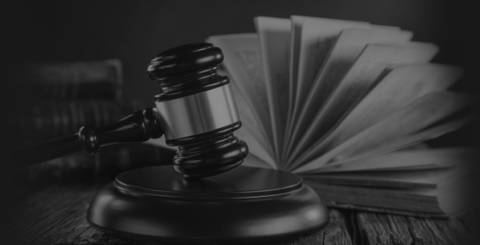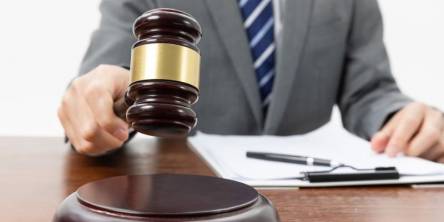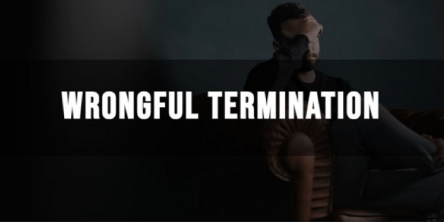Stages of Personal Injury Case

Though every personal injury case differs from the other, the basic stages of a personal injury case usually remain the same.
Here are the different stages of a typical personal injury case:
Hiring of an attorney by the plaintiff
The injured person is referred to as the plaintiff. In general, no case makes it past the summary judgment stage without some valid proof of the plaintiff’s injury. In case the damages appear to be more than the small claims court limit, most plaintiffs will seek out an attorney. The primary consultation between the plaintiff and the personal injury lawyer is free of charge as usual.On the basis of this consultation, the plaintiff decides whether to hire that lawyer or not.
When the attorney is hired, he agrees to conduct an exploratory investigation. Also, during the phase of consultation and investigation, the attorney makes sure that the case is viable, else he lets the plaintiff know. Soon, he or she enters into a fee agreement with the plaintiff.
Anything and everything the plaintiff discusses with the attorney during the consultation is strictly confidential and protected from disclosure in court by the attorney-client privilege. Not hiring a lawyer can be risky, given to the complexity of litigation.
Filing of a Complaint
Once the lawyer concludes that the case is a legitimate one, he proceeds to file a personal injury complaint about the plaintiff.The legitimacy of a case implies that there are no procedural hurdles like an expired statute of limitations etc.
This complaint is the first official document in the case. It is usually provided in a detailed manner. It mainly focuses on what the plaintiff claims the defendant did.
Then the plaintiff’s attorney takes a month or more to locate the defendant. The main purpose is to serve the complaint on the defendant. This means physically delivering the complaint to the defendant in a way that can be proved later. It makes sure that the defendant cannot later claim to not know about the lawsuit. The service papers tell the defendant the next date he or she must appear in court, in addition to the complaint.
Hiring an attorney by the defendant
Before the arrival of the first court date, the defendant usually has a period of one or more months to find a suitable attorney. In case the defendant has assets or an applicable insurance policy, finding a personal injury defense attorney, who shall be willing to take on the case, is not a troublesome task.
When insurance is applicable, the defendant needs to notify the insurance company instantly as soon as he or she comes to know about the lawsuit. In fact, it is a strict requirement in case of insurance policies.In case the defendant has not already hired a lawyer, it is the turn of the insurance company to supply and pay for its own lawyer. Defense attorneys usually work for an hourly rate.They do not follow the common contingency fee policy. This implies that the defendant can afford to pay out-of-pocket.
Pre-Trial Litigation
In this very process, the two sides usually ask each other for evidence and witness information. This phase is called “discovery.” Initially, both sides appear in court to notify the judge about the proceedings of the case, whether to agree or not agree to mediation or arbitration and to fix a trial date. This is the stage where lawyers question each other and third parties about the other party's claims and defenses. They are also allowed to collect depositions or under-oath statements, from witnesses and the involved parties.
With the proceeding of this discovery process, both sides begin to schedule depositions of the opposing party and witnesses. This phase involves examinations and cross-examinations under oath outside the courtroom.
This process of discovery and intermittent court appearances can be pretty time-consuming.It takes several months and even years in case the trial date keeps on getting postponed. After the discovery process is almost done with, the defendant asks the judge to throw out the case on summary judgment. This is because the plaintiff cannot possibly win at trial.
As the trial comes closer, the parties get into giving all their efforts by engaging in mandatory settlement conferences, making motions to determine what evidence will be allowed at trial, selecting a jury, etc.
Usually, a trial for a typical personal injury case goes on for several days. The judge or jury determines whether the defendant is liable or not.If liable, the jury or the judge decides as to how much the defendant is required to pay out in damages. Once the trial is over, an appeals process can be initiated by either of the parties. This process can last from several months to several years. Once the appeals process is done with, it is the turn of the loss to pay the damages established at trial or on appeal.
Process of Settlement
A majority of the personal injury cases settle before trial. The settlement can be initiated and done with at any point in the entire process related to the case.The parties can settle and end the case through settlement. The plaintiff can even send the first settlement offer as early as prior to filing the complaint. In case the initial evidence establishing liability or damages is inconclusive, a settlement is reached after the discovery process has gone on for quite some time.
Sometimes the attorneys are unable to settle a case by themselves.This is the time when mediation comes into play. In this process, both the parties present their cases in front a mediator with the sole purpose to settle the personal injury case. In this context, the mediator is a neutral lawyer who helps arbitrate between your lawyer and the other party's lawyer. When a settlement during mediation seems nigh impossible, the lawyers agree to move to trial.
The final determination is made only after you reach maximum medical improvement (MMI). Making the demand after you reach MMI lets your attorney set the demand as high as possible. In case you need the money earlier, your lawyer might choose to proceed before you reach MMI.
Similar Articles
Train accidents can cause devastating losses to victims. They may incur serious injuries, emotional distress, and financial strain for those affected
The Centers for Disease Control and Prevention (CDC) report that approximately seven out of every 1,000 babies born in the United States experience birth injuries.
Losing a loved one in a fatal car accident is an unimaginable tragedy, often leaving families overwhelmed by grief and facing financial hardships. Medical bills, funeral expenses, and the sudden loss of income can add to the emotional burden.
The Centers for Disease Control and Prevention estimate that about 1.7 to 3.8 million traumatic brain injuries happen each year in the US and 10% of these cases are due to sports and recreational activities.
Drivers hit pedestrians when they are walking, jogging, or running. Unfortunately, because walkers aren't protected, these accidents often end in serious injuries or death.
Accident lawyers specialize in personal injury law, helping clients obtain compensation for injuries and losses due to various accidents. Their expertise is crucial in navigating the complex legal landscape that follows these unfortunate events
Learn your rights and navigate the legal process after wrongful termination. Get essential tips and guidance to protect yourself and seek justice.
Explore your legal rights and options as an injury victim. Learn how to seek justice and compensation with our comprehensive guide.
Personal injury lawyers are legal professionals who specialize in representing individuals who have sustained injuries, both physical and emotional, due to the negligence or wrongdoing of another person, company, government agency, or any other entity.









